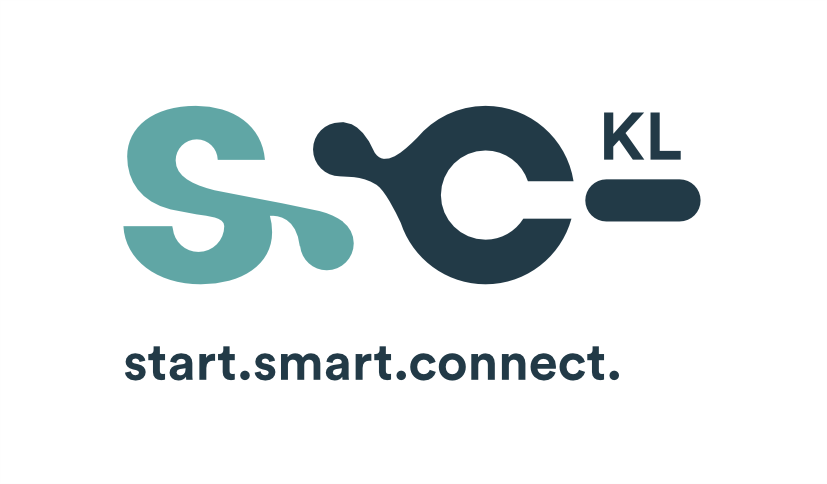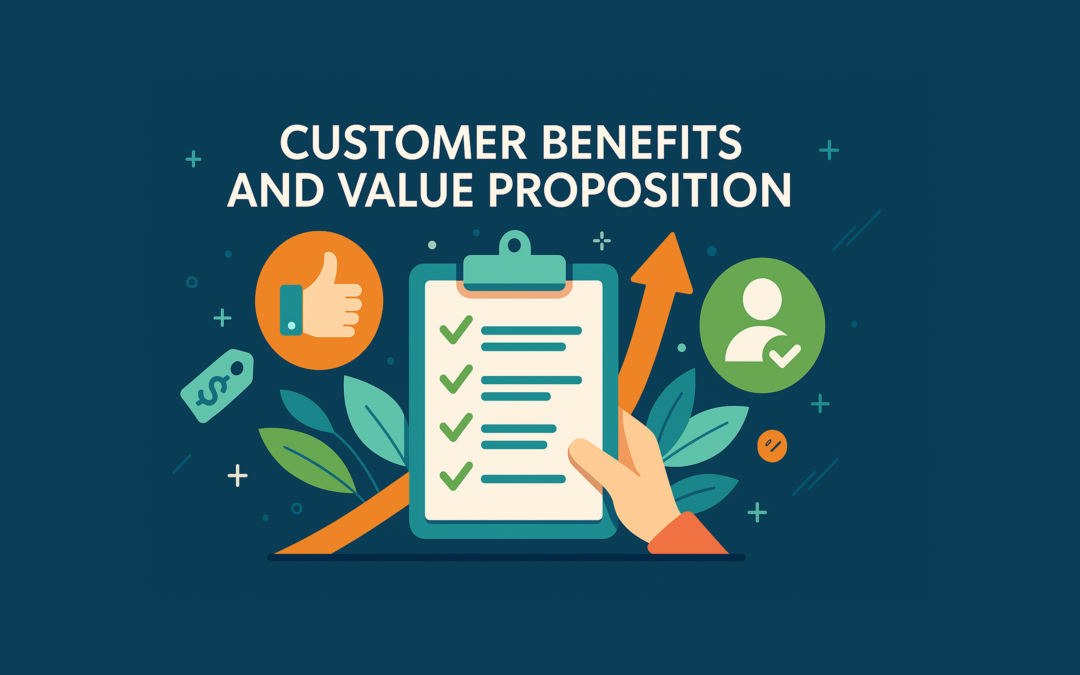Defining Your Unique Value: Crafting a Strong Value Proposition for Your Startup:
In this course, you will learn how to analyse and develop the benefits and value proposition of your idea.
Why should someone buy your product? Why do people choose you even though there are hundreds of alternatives? What makes your product different from all the others on the market? The answer is actually quite simple: through a unique benefit and value proposition. This describes the unique selling point of your idea. So you need to find out exactly what this feature is. This is why you will also learn how to analyse, formulate and develop your benefit and value proposition in this course. You will also learn how to analyse the tasks that your product performs for customers.
Video 1: Value Proposition Canvas - What are the needs of my customers?
The value proposition canvas helps you to systematically analyse your value proposition. It is part of the business model canvas and one of the customer-centric tools. In this section, we will show you exactly what the value proposition canvas is and how you can develop a value proposition for your customer groups.
You will also find a template that you can use to develop your own value proposition canvas.
Additional Learning Materials: Value Proposition
1. Understanding the Value Proposition
📌 Video: Value Proposition Explained (Strategyzer)
This video from Strategyzer explains the concept of a value proposition and how businesses can use it to align their products with customer needs. It introduces the Value Proposition Canvas as a strategic tool.
2. The Value Proposition Canvas
📘 The Value Proposition Canvas (Strategyzer)
The Value Proposition Canvas is a tool designed to help businesses understand customer needs and develop products that provide real value. This resource from Strategyzer includes a detailed breakdown of the canvas and how to apply it.
Video 2: Buyer Persona - who is my customer?
The buyer persona describes a typical representative (or stereotype) of your own target group. You use the data you have collected to create your fictitious person or group of peoplex that represents your target group. This helps you to give your target group a face and make them tangible.
In this section, we will show you exactly what a buyer persona is, how to create it and which factors you need to pay attention to.
Video 3: Jobs-to-be-done-Theory - which jobs do i solve for my customers?
The jobs-to-be-done theory (JTBD for short) is one of the most important customer-centred tools. The JTBD theory is characterised by the fact that customers buy a product or service so that a job (a task) can be completed.
In order to be able to judge the success or failure of your products, it is imperative to deal with this dimension of the product.
In this section, we will show you exactly what the JTBD theory is, what characterises it and how you can further develop your product or service using the method.
Additional Learning Materials: Customer Benefits and Value Proposition
1. Understanding Buyer Personas
📌 Video: How to Create Buyer Personas
This video by HubSpot explains what buyer personas are and how to create them effectively. It covers the importance of defining target audiences and how to use buyer personas in marketing.
📖 The Ultimate Guide to Buyer Personas
This article by Chimpify offers a deep dive into what buyer personas are, why they matter, and how to develop them for marketing success. It includes a step-by-step guide and practical examples.
🎯 Finding Your Audience: The Importance of Developing a Buyer Persona
Forbes explains why buyer personas are crucial for business success and provides insights on how to identify and refine your ideal customer profiles.
2. Buyer Personas vs. Target Groups
🔍 What’s the Difference Between Target Groups and Buyer Personas?
This HubSpot article clarifies the distinction between a broad target audience and detailed buyer personas. It explains why focusing on personas leads to more effective marketing strategies.
3. How to Define Your Buyer Persona
📘 The Beginner’s Guide to Defining Buyer Personas
This guide from the Digital Marketing Institute provides a structured approach to creating buyer personas, including research techniques and real-world applications.
Read more on Digital Marketing Institute
1. Understanding the Value Proposition
📌 Video: What is a Value Proposition? (HubSpot)
This HubSpot video explains what a value proposition is, how to craft one effectively, and why it is essential for businesses looking to position their product-market fit.
2. Introduction to Jobs to Be Done (JTBD) Theory
📌 Video: What is Jobs to Be Done? (JTBD Framework)
This video provides an introduction to the ‘Jobs to Be Done’ theory, explaining how understanding customer needs through this framework can improve product development and marketing strategies.
📘 Blog: Jobs to Be Done Explained
This article from Digitale Neuordnung provides a comprehensive overview of the Jobs to Be Done framework, illustrating how businesses can apply it to better understand their customers.
3. Advanced Insights into Jobs to Be Done
📖 Jobs to Be Done: A Framework for Customer Needs
This article dives deeper into the JTBD framework and how it can be used to align products and services with what customers are actually trying to achieve.
📘 Harvard Business Review: Know Your Customers’ Jobs to Be Done
Harvard Business Review explores the JTBD theory in depth, providing insights into how businesses can use it to innovate and create better value propositions.
High-Tech Gründerfonds #Foundersclass
What is the High-Tech Gründerfonds (HTGF)?
High-Tech Gründerfonds (HTGF) is Germany’s leading seed investor for early-stage tech and high-tech startups. It offers initial funding of up to €1 million, with potential follow-on investments of up to €3 million.
More than just capital, HTGF provides access to an extensive network of industry partners, experienced co-investors, and startup-savvy experts. Founders benefit from hands-on support, strategic guidance, and real connections to scale their ideas.
HTGF focuses on digital tech, industrial tech, life sciences, and new materials – making it a strong partner for ambitious, science-driven startups ready to make an impact.
What is the High-Tech Gründerfonds #Foundersclass?
The #Foundersclass of High-Tech Gründerfonds (HTGF) is an initiative aimed at connecting founders and encouraging exchange within the startup community. Through regular events and formats, the #Foundersclass offers a platform for founders to share their experiences, learn from each other, and grow together.
This network helps overcome challenges and paves the way to success. Some of these events were recorded on video – we’re sharing them here with you. These videos are produced and published by HTGF on YouTube. We’re simply linking to them here.
FAQ - Frequently asked questions
How detailed does our buyer persona need to be?
Many teams wonder whether they need to create a complete picture of their target audience right away. A persona doesn’t have to be perfect—it’s enough to start with the most important characteristics: Who is the person (background, role), what motivates them, and what problems do they have? The more you talk to real users, the more accurately you can adjust the persona later on.
How many personas do we need?
Sometimes too many personas are created in parallel. In the beginning, one main persona representing the largest or most important part of your target group is sufficient. You can add more personas if there are clear differences in needs or behaviors.
How do we use the Value Proposition Canvas in practice?
Many people ask, “Do we just fill in boxes?” The canvas is a tool for thinking and discussion. On the left, you collect your customers’ tasks, concerns, and desires (customer profile), and on the right, you describe how your product addresses them (value map). The important thing is the fit: for every customer problem, there should be a clear benefit or “pain reliever.”
What exactly does “jobs to be done” mean—and how do I use it?
The “jobs” are the tasks or progress that customers want to achieve in their lives – functional, emotional, or social. Instead of just focusing on features, ask yourself, “What job does our product do?” This perspective helps to identify hidden needs that go beyond pure functionality.
How specific should the value proposition be?
A value proposition should be clear, understandable, and customer-oriented. Instead of “We offer an innovative platform,” say, “We help [target group] solve [problem] faster and easier.” Good value propositions speak directly to the customer’s perspective – not internal features.
How can I tell if our value proposition really fits?
This is not apparent on paper, but in testing. If customers are willing to invest time or money—e.g., trying out a prototype, having a conversation, or even paying—then you are close to product-market fit. A lack of response or constant refinement indicates that you still need to adjust your promise.
What if our customers have very different needs?
Then it is worth segmenting the target group. You can create a separate persona and value proposition canvas for each segment. But first, try to find the greatest common denominator instead of getting bogged down too early.
How often should we review our assumptions about customer value?
Regularly. Assumptions change quickly, especially in the early stages. Every customer interview and every test with a prototype is an opportunity to refine your value proposition. Important: Document results and continuously update assumptions.
How do we proceed if we don’t get clear feedback from customers?
This is often due to overly abstract questions (“Would you buy this?”). Instead, test specific scenarios: show a prototype, let customers complete tasks with it, or ask about their previous solutions. Real behavior says more than general statements.
How does the Value Proposition Canvas relate to product-market fit?
The canvas is a tool for systematically checking whether your offering meets the needs. Product-market fit means that this fit works in reality: you have a target group that really wants, uses, and pays for your product. So the canvas is the blueprint—product-market fit is the practical test.
Glossary
Design Thinking
Short definition: Human-centered innovation approach that solves problems through understanding, ideation, prototyping, and testing.
Benefit: Promotes solutions that truly meet user needs.
Example: Developing an app through user interviews, sketches, and prototype testing.
Creativity Techniques
Short definition: Methods for systematic idea generation.
Benefit: Increase the variety and quality of ideas, help develop new ones and improve existing ones.
Example: Brainstorming, mind mapping, or the 6-3-5 method.
Associative Creativity Techniques
Short definition: Generate ideas through connections, analogies, or stimulus words.
Benefit: Encourage fresh thinking, breaking patterns, and out-of-the-box ideas.
Example: Stimulus word analysis – the word “mountain” inspires new approaches to data architecture.
Configurative Creativity Techniques
Short definition: Break down a problem into parameters and combine different variations.
Benefit: Structured generation of new variants, guided modification of existing ideas.
Example: Morphological box for sensors, energy sources, and application scenarios.
Divergent Thinking
Short definition: Generating as many ideas and options as possible.
Benefit: Encourages variety and creativity.
Example: Collecting 50 solution approaches without evaluation.
Convergent Thinking
Short definition: Selecting and narrowing down the best options.
Benefit: Leads to clear decisions and focus.
Example: Team votes with dot stickers on the 3 most promising ideas.
Timeboxing
Short definition: Fixed time limits for activities.
Benefit: Increases efficiency and prevents endless discussions. Must be followed strictly to be effective.
Example: 10 minutes of ideation, then stop.
Iteration
Short definition: Repeated adaptation and improvement through feedback.
Benefit: Increases quality and user-fit of solutions.
Example: Prototype → test → feedback → revision → new prototype → …
Problem Space
Short definition: Analysis phase in which user needs and challenges are understood.
Benefit: Prevents premature solution-orientation.
Example: Interviews reveal that the real problem is time management, not technology.
Solution Space
Short definition: Phase in which concrete ideas and prototypes are developed.
Benefit: Translates insights from the problem space into tangible solutions.
Example: Developing a calendar app after analyzing time management issues.
Checklist
1. Understand Your Target Customers (Buyer Persona)
-
-
Who is your ideal customer (e.g., companies, research institutions, public sector)?
-
What are their typical characteristics? (Industry, role, expertise, decision-making power)
-
In what context do they use your solution (e.g., network planning, security, infrastructure)?
-
2. Analyze Customer Needs and Problems (Jobs to be Done)
-
-
Functional: What task are they trying to accomplish?
-
Emotional: What do they want to feel or avoid (e.g., security, stress)?
-
Social: How do they want to be perceived (e.g., innovative, efficient)?
-
Ask yourself: “What is my customer really trying to achieve—independent of the technology?”
3. Identify Pains, Risks, and Barriers
-
-
What problems do they face today?
-
What frustrates them about current solutions?
-
What risks or fears do they associate with new technologies like 6G?
-
4. Define Desired Gains and Outcomes
-
-
What would be a real win for them?
-
What improvements do they want? (e.g., speed, cost, reliability)
-
What are their key decision-making criteria?
-
5. Describe Your Solution (Value Proposition)
-
-
What specific problem does your solution solve?
-
What value (benefit) does your product or service offer?
-
How is your solution different from existing alternatives?
-
🧩 Use simple statements like:
“Our solution helps [target customers] accomplish [task] by providing [solution], while eliminating [pains] and enabling [gains].”
6. Provide Evidence & Build Trust
-
-
What technical proof, prototypes, or studies support the value?
-
Do you have pilot partners, testimonials, or research results?
-

Hi, i'm Lukas
and I manage the e-learning program. Do you have any further questions? Feel free to contact me via email: theisen@gruendungsbuero.info

